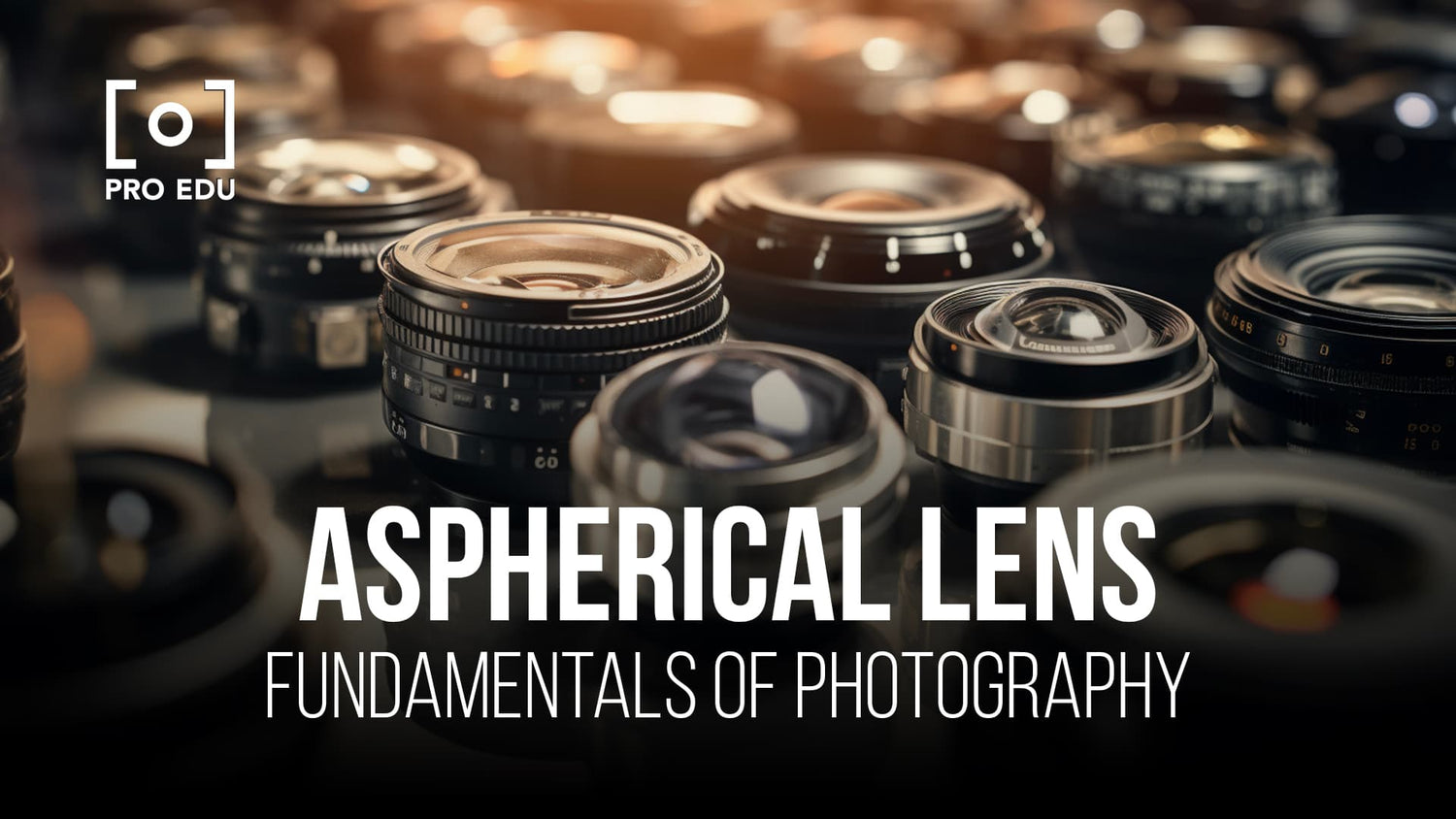Exploring Aspherical Lenses: Advantages in Photography Efficiency
As photographers, we continually strive for sharper images and better overall image quality. One lens technology that has gained popularity in recent years is the aspherical lens. These lenses are designed to reduce optical imperfections such as chromatic aberrations and field curvature while allowing for smaller and lighter lenses compared to their spherical counterparts.
Aspherical lenses have become a vital tool for photographers aiming to elevate their craft. Understanding the differences between aspherical and spherical lenses is essential to make informed decisions on which type of lens best suits our needs. Moreover, exploring the technology behind these lenses and their applications can provide valuable insights into their potential impact on the future of photography.
Key Takeaways
- Aspherical lenses help to reduce optical imperfections and achieve sharper images
- Both the advantages and disadvantages of aspherical lenses should be considered when choosing them for your specific photography goals
- Emerging lens technology has the potential to shape the future of aspherical lenses in the industry
Understanding Lenses: Spherical vs Aspherical
When it comes to lenses, we can categorize them into two main types: spherical and aspherical. Spherical lenses have a uniform curve across their surface, making their curvature consistent throughout. On the other hand, aspherical lenses have a more complex shape deviating from the traditional spherical design. This deviation allows for a varying radius of curvature from the center to the edge of the lens.
The main purpose of using aspherical lenses is to reduce optical aberrations, such as spherical aberration, which can occur in spherical lenses. By correcting these imperfections, aspherical lenses provide sharper image quality in optical devices like cameras. This feature is particularly beneficial for photographers to capture images with greater clarity and detail.
Aspherical lenses are designed with flatter curves, making them slimmer and sleeker compared to spherical lenses. This attribute not only improves the aesthetic appeal of the lens but also reduces its overall weight. As a result, photographers may find it more comfortable to use cameras equipped with aspherical lenses for extended periods.
However, it's important to note that aspherical lenses may be more expensive than their spherical counterparts, due to a special manufacturing process which requires them to be created one at a time. Despite the higher cost, many professional photographers choose aspherical lenses for their superior optical performance and benefits in terms of image quality and reduced aberrations.
In conclusion, we can see the significant differences in curvature and benefits that aspherical lenses offer over spherical lenses for photographers. By understanding these differences, photographers can make informed decisions about the type of lenses to use for their specific needs, ensuring the best possible image quality and overall photography experience.
Advantages and Disadvantages of Aspherical Lenses
Aspherical lenses offer several advantages and disadvantages for photographers. One of the main benefits is the significant reduction in spherical aberration, which is a common issue with traditional spherical lenses. By addressing this problem, aspherical lenses can provide clearer and sharper images.
Additionally, these lenses are capable of aberration correction across the entire field of view. The complex curvature of aspherical lenses allows them to efficiently control image distortions and maintain edge-to-edge sharpness.
However, aspherical lenses also come with some disadvantages. First, they have a relatively small light area, which can result in slight blurring when looking through the lens edge. This may impact the peripheral vision of an image and reduce the overall visual range.
Another potential drawback is that aspherical lenses are generally more expensive than their spherical counterparts, making them less accessible for amateur or intermediate photographers. Manufacturing these complex lenses requires more precision and advanced materials, driving up the cost. Despite the higher price point, many professional photographers find the benefits of aspherical lenses to be worth the investment for capturing high-quality images.
The Technology Behind Lenses
As we explore the world of aspherical lenses, it's important to understand the technology behind them. Aspherical lenses are primarily used in high-end optics to create sharper images and reduce or eliminate certain optical imperfections such as chromatic aberrations and field curvature. They are different from traditional spherical lenses, which have a curved surface like a slice of a sphere.
One key benefit of aspherical lenses is that they enable us to create smaller and lighter lenses, as they reduce the need for numerous lens elements and lens groups. Two primary methods are employed to manufacture these lenses: grinding and polishing or glass molding. Let's take a closer look at these processes.
Grinding and polishing: The basic concept behind grinding and polishing an aspherical lens involves transcribing the exact shape of the tool onto the lens material. This is achieved by rubbing the tool and lens together until the desired shape is reached. Grinding and polishing require extreme precision and can be time-consuming.
Glass molding: This method is an alternative to grinding and polishing. Glass molding uses heat and pressure to form the aspherical lens shape within a mold. Although the process is faster than grinding and polishing, it can be slightly less precise and more prone to defects in the lens material.
Aspherical lenses can also be made from various materials, such as glass and plastic. Glass lenses typically offer better optical quality but can be more expensive and heavier than their plastic counterparts. Plastic aspherical lenses, on the other hand, are lighter and more cost-effective but may compromise image quality.
In conclusion, the optical design of aspherical lenses offers significant benefits for photographers, primarily in the form of sharper images and reduced optical imperfections. By understanding the manufacturing processes and materials involved, we can appreciate the technology behind these lenses and make informed choices when selecting equipment for our photography needs.
Applications of Aspherical Lenses
Aspherical lenses provide many benefits in various fields, including photography. Their unique design helps to improve image quality and reduce optical aberrations. In photographic camera lenses, aspherical elements contribute to creating sharper images by reducing or eliminating optical imperfections, such as chromatic aberrations and field curvature1.
In telescopes, aspherical lenses are crucial in achieving high-quality, distortion-free images of celestial objects. By reducing spherical and chromatic aberrations, aspherical lenses allow telescopes to capture clearer, more detailed images of distant objects in space2.
Apart from applications in optical systems, aspherical lenses are also found in contact lenses. These specially designed lenses provide better vision correction for individuals with astigmatism, a common eye condition in which the cornea has an irregular shape3.
Missile-guidance systems often incorporate aspherical lenses to ensure accurate targeting and tracking. The precision and ability of aspherical lenses to reduce optical aberrations make them ideal for use in these high-stakes applications4.
In summary, the numerous applications of aspherical lenses show their value and versatility in a variety of fields. From photography to missile guidance, these lenses contribute significantly to enhancing performance and delivering desirable results.
Future of Aspherical Lenses
Aspherical lenses have already made a significant impact on the photography world, and we believe this trend will continue. The main reason for their increasing popularity is the ability to correct optical imperfections such as chromatic aberrations, field curvature, and issues with light focus.
By incorporating aspherical elements into lens designs, manufacturers create lenses with better overall performance. These lenses produce images with reduced distortion, increased sharpness, and more uniform illumination across the entire field. This is especially crucial in modern micro and wide-angle lenses, where field curvature and other optical flaws are more pronounced.
Chromatic aberrations are color fringes that can appear in the image due to the lens's inability to focus different colors at the same point. Aspherical lenses help to minimize this effect, resulting in more vibrant and color-accurate images. Field curvature is an issue in which the sharpness degrades towards the corners of the image. Aspherical lenses address this problem too, leading to consistently sharp images across the entire frame.
Innovation in lens manufacturing technologies has made it possible to produce aspherical lenses with greater precision and at a more affordable cost. As materials and production techniques continue to advance, we can expect an increasing impact of aspherical lenses on the photography industry. This will lead to even better image quality, reduced size and weight of lenses, and improved usability for both professionals and hobbyists alike.
Frequently Asked Questions
What improvements do aspherical lenses bring to photography?
Aspherical lenses bring several improvements to photography by correcting optical aberrations, such as spherical aberrations and astigmatism. This results in sharper and clearer images with increased resolution.
How do aspherical lenses reduce optical aberrations?
Aspherical lenses reduce optical aberrations by having a non-spherical surface. This change in the surface allows the lens to focus light more effectively, helping to correct distortions and other unwanted effects in the resulting images.
What is the difference in image quality between aspherical and spherical lenses?
Aspherical lenses offer better image quality compared to spherical lenses as they can correct various optical aberrations. This leads to sharper, clearer images with fewer distortions and greater overall quality.
Are there any downsides to using aspherical lenses in photography?
A downside to aspherical lenses is their higher cost compared to traditional spherical lenses. Aspherical lenses can be more difficult and expensive to manufacture, which may make them less accessible to some photographers.
Is the price difference between aspherical and spherical lenses justified?
Although aspherical lenses are more expensive, their ability to correct optical aberrations and produce higher quality images can justify the price difference for many photographers. Those who require the best possible image quality may find aspherical lenses to be a worthwhile investment.
Can aspherical lenses improve photography for those with astigmatism?
Aspherical lenses may be helpful for those with astigmatism, as their unique design reduces spherical aberrations. This can result in clearer and sharper images for photographers with astigmatism who may struggle with blurriness caused by spherical lenses.




























